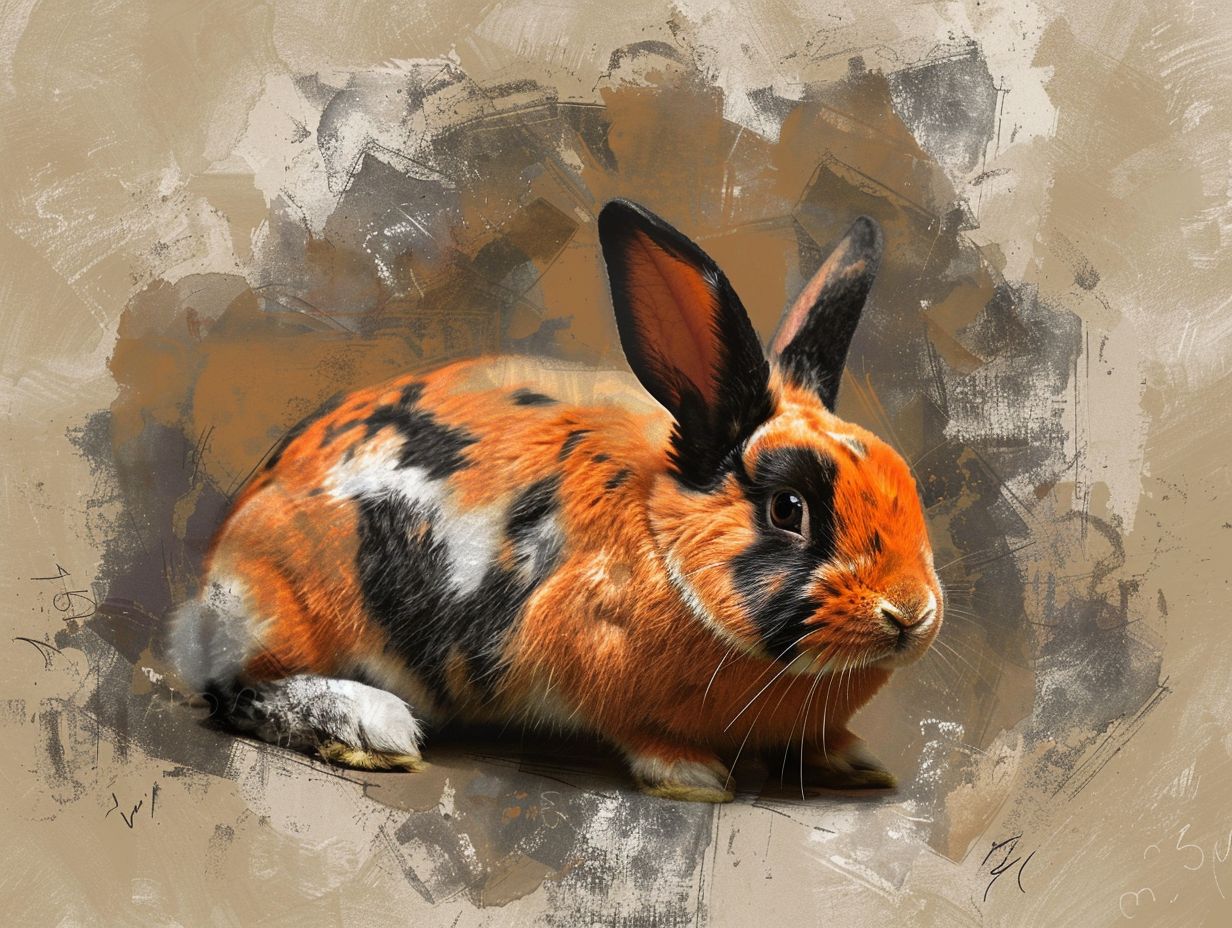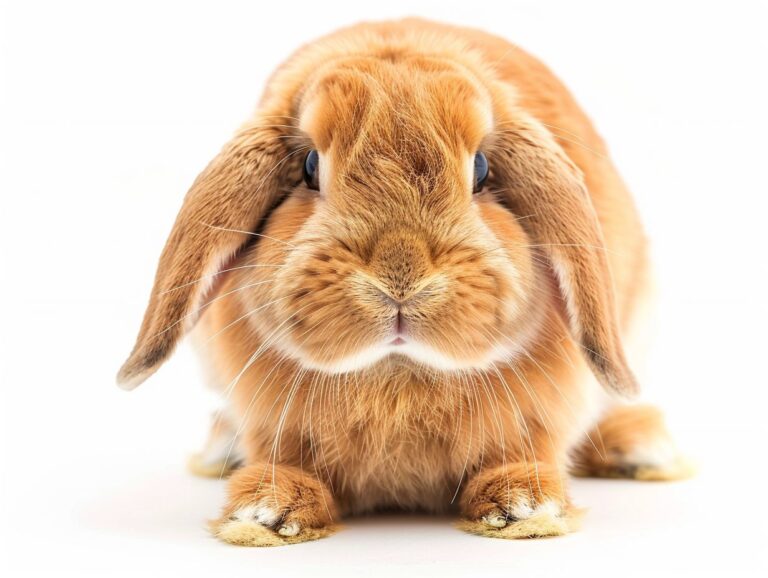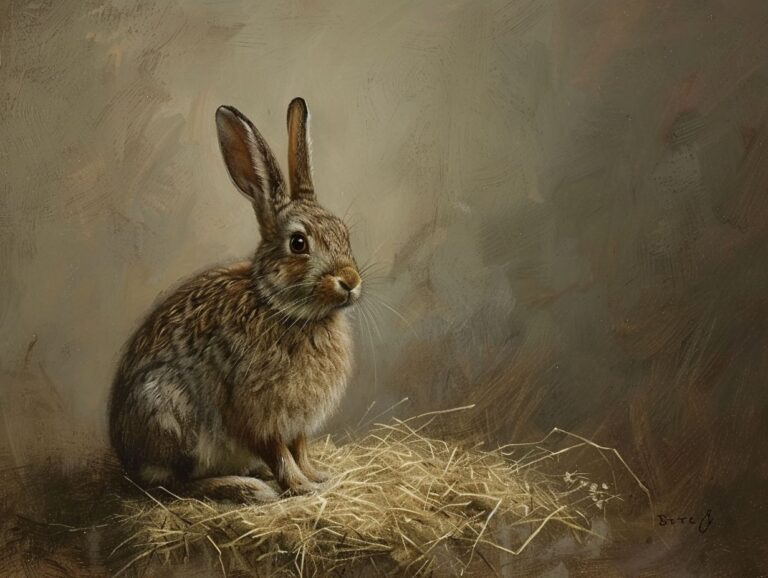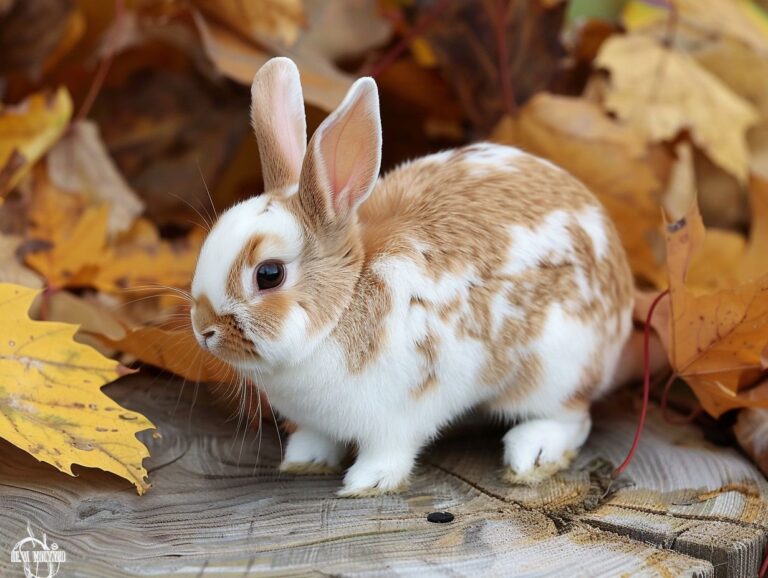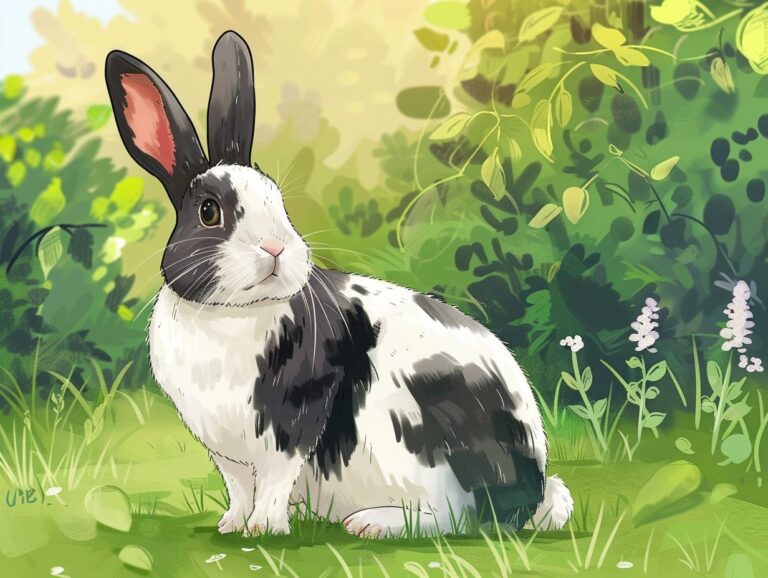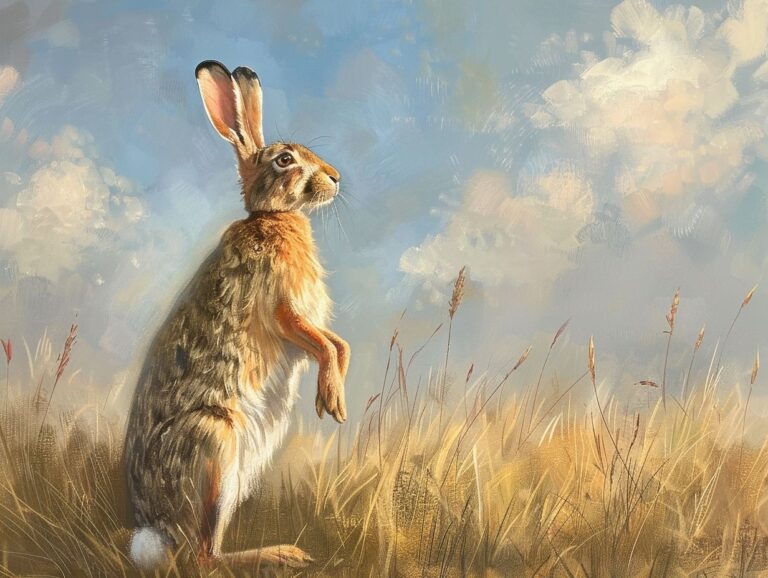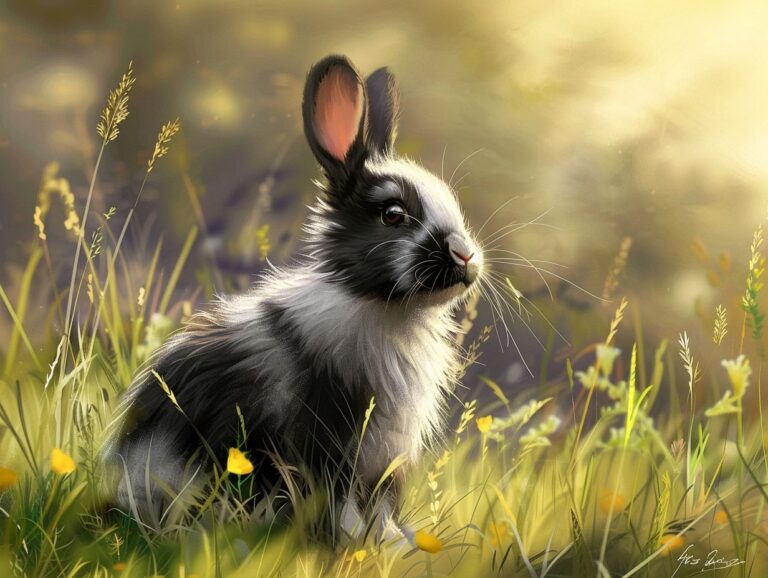Harlequin Rabbit Breed: Characteristics, Care, History, and Breeding Practices
Are you curious about Harlequin rabbits and what sets them apart from other breeds?
This article explores the unique characteristics of Havana rabbit breed, including their coat color and pattern, body shape, and temperament.
We also provide insights on how to care for these adorable creatures, from housing and diet to grooming and hygiene.
Delve into the fascinating history of the Harlequin rabbit breed, discussing its origins, popularity, and breeding practices.
Stay tuned for fun facts about these charming rabbits that will surely make you fall in love with them even more!
Key Takeaways:
What Is a Harlequin Rabbit?
The Harlequin rabbit is a unique breed known for its distinctive color pattern and markings that resemble a checkerboard. Originating from France, this breed has gained popularity in various countries like England and the United States as both a friendly pet and a show rabbit.
With its striking appearance, the Harlequin rabbit exhibits a medium to large-sized body, usually weighing between 6-9 pounds. Its coat showcases a harmonious blend of two colors, creating a mesmerizing visual effect. These rabbits are characterized by their calm and social nature, making them ideal companions for families and individuals alike.
Harlequin rabbits first appeared in the 1880s through selective breeding efforts in France, resulting in the creation of this unique dual-color pattern. Their popularity soared as they made their way to England and later to the US, where they quickly won the hearts of many rabbit enthusiasts.
What Are the Characteristics of a Harlequin Rabbit?
Harlequin rabbits are known for their unique coat color pattern and markings, coupled with a gentle, playful, and friendly temperament that makes them ideal as family pets. Originating from France, these rabbits exhibit a blend of colors that set them apart from other breeds.
One of the most striking features of Harlequin rabbits is their distinct coat color patterns that consist of alternating bands of two colors flowing over the body. These colors are usually vibrant and contrasting, creating a visually appealing look. Not only are they visually stunning, but Harlequins are also known for their friendly and curious nature. They enjoy human interaction and are quite social, thriving on companionship. Their energetic and playful demeanor makes them a joy to watch and interact with.
Coat Color and Pattern
The coat color and pattern of a Harlequin rabbit are distinct, with variations such as Japanese Harlequin and Magpie Harlequin showcasing specific patterns and color combinations.
While the Japanese Harlequin is known for its striking patches of color distributed evenly across a white coat, the Magpie Harlequin features asymmetrical patterns of black and orange. Japanese Harlequins typically boast a tri-color pattern with a combination of black, orange, and white hues, whereas the Magpie variety displays a more scattered mixture, often resembling a piebald appearance with large, irregular patches. Both variations exhibit contrasting colors that create a visually captivating look, making them quite popular among rabbit enthusiasts.
Body Shape and Size
Harlequin rabbits typically exhibit a medium-sized body with a compact build, showcasing a balanced physique that enhances their overall charm and elegance as a breed.
Their body shape is characterized by a well-rounded form, strong shoulders, and hindquarters contributing to their active and agile movement. These rabbits often weigh between 6-9 pounds, with males usually being slightly larger than females. The sleek, glossy coat of Harlequins features distinct color patterns, with a split coloration divided down the center of their bodies, creating a striking visual appeal. This unique coat appearance adds to their allure, making them standout among other rabbit breeds.
Temperament and Personality
Harlequin rabbits are known for their gentle and friendly temperament, making them ideal as family pets due to their playful and sociable nature that thrives on human interaction.
These rabbits are characterized by their outgoing and engaging demeanor, often seeking attention and affection from their human companions. They enjoy interactive play and love to explore their surroundings, showing curiosity and a zest for life. Their sociable nature makes them excellent companions for families, as they are welcoming to both adults and children.
A notable trait of Harlequin rabbits is their adaptability to different environments and ability to form strong bonds with their owners. They are known to be responsive to human emotions, providing comfort and companionship in times of need.
How to Care for a Harlequin Rabbit?

Regarding their diet, hay should make up the majority of a Harlequin rabbit’s food intake to ensure proper digestion and wear down their teeth. Alongside hay, high-quality pellets designed specifically for rabbits should be offered in limited quantities to meet their nutritional needs.
Grooming a Dutch rabbit breed entails regular brushing to prevent matting of their dense fur and trimming their nails to avoid overgrowth and discomfort. It’s advisable to check their ears for any signs of infection and bathe them occasionally, especially if they get soiled.
Being prone to dental issues, providing suitable chew toys can help keep their teeth in good condition. Respiratory problems can arise due to drafts or poor air quality, so ensuring a clean and well-ventilated living environment is essential for their health.
Housing and Environment
Creating a suitable housing environment for Harlequin rabbits involves providing a spacious hutch with ample ventilation and bedding to ensure their comfort and well-being.
Harlequin rabbits, known for their energetic and sociable nature, require adequate space to hop, play, and exhibit their natural behaviors within the hutch. It is essential to have proper ventilation in the housing setup to maintain fresh air circulation and prevent respiratory issues.
Comfortable bedding is crucial for these rabbits to rest, burrow, and feel secure. Pine shavings or hay can be used as suitable bedding material, ensuring it is kept dry and clean for the rabbit’s hygiene and health. Placing the hutch in a shaded area to avoid direct sunlight exposure and extreme temperatures is vital for their well-being.
Diet and Nutrition
The diet of a Harlequin rabbit should consist of a combination of hay, pellets, fresh vegetables, fruits, and access to clean water to ensure they receive the necessary nutrients for their overall health and well-being.
Hay is a crucial component of a Harlequin rabbit’s diet as it provides essential fiber for their digestive system.
Pellets formulated specifically for rabbits should also be part of their daily intake, offering them additional nutrients and minerals.
Fresh vegetables like leafy greens, carrots, and bell peppers are rich in vitamins and minerals required for their growth and vitality.
Fruits can be given as treats occasionally but should not be a staple as they contain natural sugars.
Lastly, water is vital for maintaining proper hydration and ensuring optimal organ function in Harlequin rabbits.
Grooming and Hygiene
Regular grooming is essential for Harlequin rabbits to maintain their coat’s cleanliness and health, requiring gentle brushing and periodic nail trimming to ensure their well-being.
Brushing your Harlequin rabbit’s coat a few times a week helps prevent matting and removes loose fur, keeping their coat shiny and healthy. Trim their nails regularly to avoid overgrowth, which can cause discomfort and potential injuries.
Along with grooming, provide a balanced diet rich in hay, fresh veggies, and pellets to support their overall health. It is also crucial to monitor their dental health, as dental issues can impact their well-being.
Creating a safe and stimulating environment, such as providing toys and tunnels, can help keep your Harlequin rabbit happy and active.
What Is the History of the Harlequin Rabbit Breed?
The history of the Harlequin rabbit breed traces back to its origins in France, with subsequent popularity spreading to countries like England and the United States, where breed enthusiasts have appreciated its unique characteristics and charming demeanor.
Originally known as the Japanese Rabbit, Harlequin rabbits were first developed in France during the late 1800s by breeders who aimed to create a strikingly patterned rabbit with a calm temperament. The breed’s distinctive coat pattern of alternating colored bands quickly caught the attention of rabbit fanciers, leading to its introduction to England in the early 1900s. From there, it found its way to the United States, where its popularity continued to soar. The Harlequin’s elegant appearance, docile nature, and playful demeanor have endeared it to rabbit enthusiasts worldwide, making it a beloved breed in the rabbit fancy community.
Origins and Development
The origins and development of the Harlequin rabbit breed are rooted in the breeding efforts of European associations and enthusiasts who sought to create a unique rabbit with striking coat patterns and amiable temperament.
These breeders drew inspiration from various breeds such as the Dutch and Japanese rabbits. Through selective crossbreeding, they carefully honed in on specific coat markings and color combinations to achieve the distinct harlequin-like appearance. The British Rabbit Council and American Rabbit Breeders Association played crucial roles in officially recognizing the breed standards, ensuring uniformity in appearance and breed characteristics across different regions. This standardization process helped solidify the Harlequin rabbit’s identity and popularity among rabbit fanciers around the world.
Popularity and Decline

Over the years, the Harlequin rabbit’s unique coat pattern and charming personality captured the hearts of many rabbit breeders and pet owners worldwide. Its distinctive coloration and striking appearance set it apart from other breeds, adding to its allure and appeal.
Despite its initial success, the breed encountered challenges as breeding preferences shifted and newer, more ‘trendy’ breeds gained attention. This, coupled with declining interest and a decrease in breeding numbers, led to a notable decline in the Harlequin rabbit’s prominence within the rabbit breeding community.
What Are the Breeding Practices for Harlequin Rabbits?
Breeding Harlequin rabbits involves selecting healthy breeding stock, understanding genetic considerations, and providing proper care during mating, pregnancy, and the care of newborns. Health and genetics considerations play a crucial role in maintaining the breed’s vitality and characteristics.
When choosing breeding stock, it is essential to look for animals that exhibit the desired traits and characteristics specific to Belgian Hare rabbits, such as their distinct coat pattern and coloration. Assessing the genetic background of potential breeding rabbits is crucial to avoid hereditary health issues and promote diversity within the breed.
During the mating process, it is important to ensure that the rabbits are healthy and in peak condition to maximize the chances of a successful breeding. Providing a nutritious diet and a stress-free environment can greatly impact the reproductive success of the mating pair.
Selecting Breeding Stock
Selecting breeding stock for Harlequin rabbits involves criteria set by organizations like the American Rabbit Breeders Association to ensure the continuation of desirable traits and genetic diversity within the breed.
When choosing breeding stock for Harlequin rabbits, breeders must pay close attention to specific characteristics such as coat color, eye color, body type, and temperament. The American Rabbit Breeders Association (ARBA) has specific standards that define what constitutes an ideal Harlequin rabbit, including the distinct color pattern. Maintaining these standards is crucial for preserving the breed’s unique qualities and preventing deviations that could dilute the gene pool.
Genetic diversity is another critical factor to consider when selecting breeding stock. By ensuring a diverse gene pool, breeders can reduce the risk of hereditary diseases and promote overall health and vitality within the Harlequin rabbit population. It is essential to conduct thorough research on the lineage and genetic history of potential breeding rabbits to make informed decisions that contribute to the long-term sustainability of the breed.
Mating and Pregnancy
The mating and pregnancy stages in Harlequin rabbits require careful monitoring and support to ensure the health and well-being of the breeding pair and the successful development of the offspring.
During mating, it is essential to observe the behavior and interactions between the male and female to ensure successful copulation. Once mating occurs, the female’s pregnancy typically lasts around 31 days. Monitoring her weight, appetite, and activity levels is crucial during this time to detect any abnormalities or potential issues. Providing a calm and stress-free environment for the pregnant doe is important for her well-being and the development of the kits.
Care for Newborns
Caring for newborn Harlequin rabbits involves providing a warm and safe environment, ensuring proper nutrition and care, and monitoring their development to promote healthy growth and vitality.
One essential aspect of caring for these delicate creatures is creating a comfortable nest box where the kits can snuggle and stay warm. Ensure the bedding is soft, clean, and changed regularly to maintain hygiene. Warmth is crucial, as newborn Harlequin rabbits are particularly sensitive to temperature changes.
- It’s important to feed the kits nutritionally balanced formula suitable for their age, as they rely on their mother’s milk for essential nutrients in the initial weeks.
- Regularly weigh the kits to track their growth and adjust feeding quantities accordingly to support their development.
- Keep their surroundings quiet and minimize handling during the first few weeks to reduce stress and ensure they feel secure in their environment.
Health and Genetics Considerations
Health and genetics considerations are paramount in breeding Harlequin rabbits, as breeders must be vigilant in addressing dental problems, genetic disorders, and other health issues that may impact the breed’s overall vitality.
One crucial aspect to monitor in lilac rabbits is their dental health, as their unique skull structure can predispose them to dental issues. Regular dental check-ups and providing appropriate chew toys can help prevent issues like overgrowth of teeth.
In terms of genetic disorders, breeders should be knowledgeable about conditions such as mandibular prognathism, cardiomyopathy, and skeletal abnormalities that can affect tan rabbit breeds to ensure responsible breeding practices.
Ensuring proper diet, exercise, and a stress-free environment are also essential for maintaining the general health and well-being of these rabbits.
What Are Some Fun Facts About Harlequin Rabbits?

Harlequin rabbits have some intriguing and fun facts, such as their unusual bumblebee-like markings and a charming story behind their distinctive appearance that adds to their appeal as beloved pets.
Legend has it that the first Harlequin rabbit was discovered in a French monastery garden, sporting its iconic patched coat that resembles the harlequin costume worn by jesters. These rabbits are known for their unique color pattern, where each side of their face is distinctly different – one side with black patches and the other with orange or fawn patches.
Himalayan rabbit breed: Characteristics, care, history, and breeding practices are not only prized for their striking looks but also for their friendly and docile nature. They are known to be social creatures that enjoy the company of humans and other rabbits, making them popular choices as pets for families and individuals alike.
Frequently Asked Questions
What is the Harlequin Rabbit breed known for?
The Harlequin Rabbit breed is known for its unique color pattern, which is a combination of orange or fawn and either black or blue.
What are the characteristics of the Harlequin Rabbit breed?
The Harlequin Rabbit breed is medium-sized and has a compact body with a rounded head. They have short, glossy fur and their ears are held erect. They are known for their gentle and friendly nature, making them great pets.
How should I care for a Harlequin Rabbit?
Harlequin Rabbits require a balanced diet of hay, fresh vegetables, and a small amount of high-quality pellets. They also need regular grooming to keep their coat in good condition. Providing them with a safe and spacious enclosure and regular exercise is also important for their well-being.
What is the history of the Harlequin Rabbit breed?
The Harlequin Rabbit breed originated in France in the 1880s. They were created by crossing Dutch and Swiss breeds with wild European rabbits. They were first recognized as a breed in 1887 and were brought to the United States in the early 20th century.
What should I know about breeding Harlequin Rabbits?
Breeding Harlequin Rabbits should be done carefully and responsibly to ensure the health and well-being of the rabbits. It is important to research and understand the genetics and potential health concerns of the breed before breeding. Proper housing, nutrition, and socialization are also crucial for successful breeding.
Are there different varieties of Harlequin Rabbits?
Yes, there are two recognized varieties of the Harlequin Rabbit breed: Japanese and Magpie. The Japanese variety has a distinct orange and black pattern, while the Magpie variety has a fawn and blue pattern. Both varieties are considered equally valuable in the breed standard.

